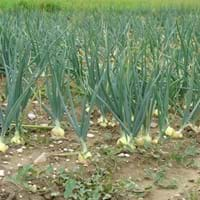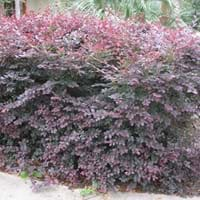Life Span
Perennial
Perennial
Type
Bulb or Corm or Tuber
Broadleaf Evergreen
Origin
World/Pandemic, North America, Europe, Russia/Siberia, Northern Africa, Asia, India
China, Japan
Types
Not Available
Little Rose Dawn, Hines Purpleleaf, ‘Shang-hi
Number of Varieties
Not Available
Habitat
Cropland, Farms, gardens
gardens, Hillside, open Woodlands, Roadsides, Rocky areas, Stream side, Woodlands
USDA Hardiness Zone
Not Available
6-9
AHS Heat Zone
Not Available
Not Available
Habit
Not Available
Oval or Rounded
Flower Color
White, Yellow green
White
Flower Color Modifier
Bicolor
Bicolor
Fruit Color
Not Available
Brown
Leaf Color in Spring
Blue Green, Yellow green
Green, Bronze
Leaf Color in Summer
Green, Gray Green
Green
Leaf Color in Fall
Green, Gray Green, Yellow green
Green
Leaf Color in Winter
Not Available
Green
Plant Season
Spring, Summer
Spring, Summer, Fall, Winter
Sunlight
Full Sun, Partial Sun
Full Sun, Partial Sun, Partial shade
Type of Soil
Loam, Sand
Loam
The pH of Soil
Neutral
Acidic, Neutral
Soil Drainage
Well drained
Average
Bloom Time
Spring, Late Spring, Early Summer
Early Spring, Late Winter
Tolerances
Drought
Drought
Where to Plant?
Ground, Pot
Container, Ground
How to Plant?
Seedlings, Sets
Seedlings, Transplanting
Plant Maintenance
Medium
Low
Watering Requirements
Keep the ground moist but not water-logged, Requires a lot of watering, Water twice a day in the initial period
Do Not over Water
In Summer
Lots of watering
Lots of watering
In Spring
Moderate
Consistently
In Winter
Average Water
Ample Water
Soil pH
Not Available
Acidic, Neutral
Soil Type
Not Available
Loam
Soil Drainage Capacity
Well drained
Average
Sun Exposure
Full Sun, Partial Sun
Full Sun, Partial Sun, Partial shade
Pruning
Remove damaged leaves, Remove dead branches, Remove dead leaves
Prune to control growth
Fertilizers
All-Purpose Liquid Fertilizer
All-Purpose Liquid Fertilizer, Fertilize three times a year
Pests and Diseases
Red blotch
Bacterial Gall
Plant Tolerance
Drought
Drought
Flower Petal Number
Single
Single
Showy Fruit
Not Available
No
Edible Fruit
Not Available
No
Fragrant Bark/Stem
Yes
No
Foliage Texture
Medium
Medium
Foliage Sheen
Matte
Matte
Attracts
Not Available
Not Available
Allergy
Not Available
Not Available
Aesthetic Uses
Not Used For Aesthetic Purpose
Showy Purposes
Beauty Benefits
Not Available
Not Available
Environmental Uses
Air purification
Not Available
Medicinal Uses
Asthma, Bronchitis, cholesterol-lowering, Cough, Diabetes, Digestion problems, Diuretic, High blood pressure
No Medicinal Use
Part of Plant Used
Whole plant
Whole plant
Other Uses
Culinary use
Used as Ornamental plant
Used As Indoor Plant
Yes
No
Used As Outdoor Plant
Yes
Yes
Garden Design
Not Available
Container, Feature Plant, Foundation, Hedges, Mixed Border, Screening, Wind Break
Botanical Name
ALLIUM cepa 'Vidalia'
LOROPETALUM chinense
Common Name
Garden Onion, Sweet Onion, Vidalia Onion
Loropetalum, Chinese fringe flower
In Hindi
मीठा प्याज
Loropetalum
In German
Sweet Onion
Loropetalum
In French
oignon doux
Loropetalum
In Spanish
Cebolla dulce
Loropetalum
In Greek
γλυκό Κρεμμύδι
Loropetalum
In Portuguese
Cebola doce
Loropetalum
In Polish
słodka Cebula
Loropetalum
In Latin
Dulcis cepa
Loropetalum
Phylum
Tracheophyta
Spermatophyta
Class
Magnoliopsida
Dicotyledonae
Order
Asparagales
Saxifragales
Family
Liliaceae
Hamamelidaceae
Clade
Angiosperms, Asparagales, Monocots
Angiosperms, Core eudicots, Eudicots
Tribe
Not Available
Not Available
Subfamily
Not Available
Not Available
Number of Species
Not Available
Difference Between Sweet Onion and Loropetalum Chinese
If you are confused whether Sweet Onion or Loropetalum Chinese are same, here are some features about those plants to help you choose better. Many people think that these two plants have the same characteristics, but one can see Sweet Onion and Loropetalum Chinese Information and learn more about it. Fertilizers required for proper growth of Sweet Onion are All-Purpose Liquid Fertilizer, whereas for Loropetalum Chinese fertilizers required are All-Purpose Liquid Fertilizer and Fertilize three times a year. Hence, one should know the basic difference between Sweet Onion and Loropetalum Chinese if you are planning to have them in your garden to enhance its beauty.
<
Flowering PlantsImportance of Sweet Onion and Loropetalum Chinese
Want to have the most appropriate plant for your garden? You might want to know the importance of Sweet Onion and Loropetalum Chinese. Basically, these two plants vary in many aspects. Compare Sweet Onion and Loropetalum Chinese as they differ in many characteristics such as their life, care, benefits, facts, etc. Every gardener must at least have the slightest clue about the plants he wants to plant in his garden. Compare their benefits, which differ in many ways like facts and uses. The medicinal use of Sweet Onion is Asthma, Bronchitis, cholesterol-lowering, Cough, Diabetes, Digestion problems, Diuretic and High blood pressure whereas of Loropetalum Chinese is No Medicinal Use. Sweet Onion has beauty benefits as follows: Not Available while Loropetalum Chinese has beauty benefits as follows: Not Available.
Compare Facts of Sweet Onion vs Loropetalum Chinese
How to choose the best garden plant for your garden depending upon its facts? Here garden plant comparison will help you to solve this query. Compare the facts of Sweet Onion vs Loropetalum Chinese and know which one to choose. As garden plants have benefits and other uses, allergy is also a major drawback of plants for some people. Allergic reactions of Sweet Onion are Not Available whereas of Loropetalum Chinese have Not Available respectively. Having a fruit bearing plant in your garden can be a plus point of your garden. Sweet Onion has no showy fruits and Loropetalum Chinese has no showy fruits. Also Sweet Onion is not flowering and Loropetalum Chinese is not flowering . You can compare Sweet Onion and Loropetalum Chinese facts and facts of other plants too.





